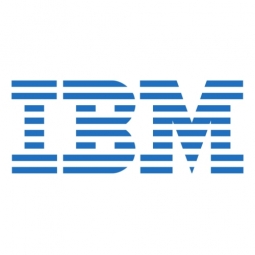Download PDF
UBM plc: Taking the pulse of the business and engaging employees with a far-reaching strategic transformation
Technology Category
- Application Infrastructure & Middleware - Data Exchange & Integration
Applicable Industries
- Professional Service
Applicable Functions
- Human Resources
Services
- Data Science Services
The Challenge
UBM, a leading global events business, was undergoing a significant strategic transformation named 'Events First'. As part of this transformation, the company was preparing to complete the largest acquisition in its history - Advanstar, a US-based events and marketing services business valued at more than USD970m. The company faced the risk of human capital flight if it was unable to effectively engage top talent with the new strategic direction. UBM needed to make significant structural, process and systems changes, uniting its previously autonomous regional businesses. The challenge was to ensure all of its employees were engaged and aligned with the new future vision.
About The Customer
UBM plc, headquartered in London, England, is one of the world’s leading B2B events organizers. The company employs more than 5,000 people and operates in more than 20 countries around the world. UBM helps professionals succeed by enabling them to connect with each other and with the markets they serve. The company was undergoing a long-term strategic transformation named 'Events First', which included the acquisition of Advanstar, a US-based events and marketing services business valued at more than USD970m.
The Solution
UBM used IBM Kenexa Survey Enterprise to measure engagement and gain insights into employees’ views on its new strategy and the way the company is currently operating. The company designed a comprehensive communications plan to help its people understand the importance of the survey, and how to complete it. Working closely with IBM, UBM successfully completed its largest ever engagement survey across its global business. This enabled the company to gain deep insights into employee perceptions as it moved forward with its strategic transformation. Using the results of the survey, UBM’s executive committee decided that its two key priorities for the year ahead should be customer focus and systems, tools, processes.
Operational Impact
Related Case Studies.
Case Study
Wittmann EDV-Systeme launches IT monitoring services
Small and medium-sized businesses often lack the know-how and resources required for thorough IT system monitoring. Wittmann EDV-Systeme wanted to launch a solution to plug the gap – enabling it to improve its own competitiveness and that of its customers. IT landscapes are becoming ever more complex and outsourcing is gaining popularity, IT systems must nonetheless remain easy-to-use and extremely reliable at all times. Automated, round-the-clock system monitoring therefore represents an immensely valuable proposition for companies: downtime for business-critical applications can be avoided, and IT systems remain available at all times.
Case Study
Uncovering behavioral insight to help reward and retain the best employees
The HR services company, an IBM client, was facing the challenge of understanding the factors underlying personal employment choices. They wanted to offer their clients unprecedented insight into what motivates employees and prospective job candidates. However, their existing systems were not capable of handling the surging data volumes collected from a wide range of different data sources. With the total volume likely to keep on growing, the firm looked for a solution that could meet current needs and scale to meet tomorrow’s demands.
Case Study
Infosys achieves a 5–7 percent effort reduction across projects
Infosys, a global leader in consulting, technology, and outsourcing solutions, was facing significant challenges in application development and maintenance due to its distributed teams, changing business priorities and the need to stay in alignment with customer needs. The company used a mix of open source, home-grown and third-party applications to support application development projects. However, challenges resulting from distributed teams using manual processes increased as the company grew. It became more and more important for Infosys to execute its projects efficiently, so they could improve quality, reduce defects and minimize delays.
Case Study
Flex Contact Center: Supporting rapid business growth with IBM Connections Cloud and IBM Verse
Flex Contact Center, a professional services company offering telesales, call-center, anti-attrition, back-office, helpdesk and collection services, has grown rapidly since its establishment in 2009. With operations in 12 sites across two states and four cities in Brazil, the company employs more than 11,000 people. However, the company realized that to prevent barriers to future expansion, it was essential to make it as easy as possible for its people to work together effectively—even if they were based in separate geographical locations. Traditional approaches to collaboration—based on email and phone calls—threatened to reduce productivity. Flex Contact Center wanted to enable better collaboration and communication across its workforce, but did not want to make large investments in infrastructure.
Case Study
PureFluent: Connecting to partners and customers through the cloud for enhanced productivity
PureFluent, a translation services company, was facing challenges in managing its translation and document review processes. The company often received files in uneditable formats from customers, which required staff members to transfer text to word processing or spreadsheet documents. During the translation process, maintaining version control was a challenge because PureFluent sent work to hundreds of translators in multiple geographic locations. It was also time-consuming for staff to manage the large volume of emails and FTP transactions required to submit translations for customer review and ensure the integration of requested changes. Furthermore, staff were spending significant time hunting through their emails for specific attachments.
Case Study
IBM social business software connects and empowers employees for competitive advantage
Superior Group, a company providing workforce productivity solutions, found that its employees worldwide felt disconnected from headquarters, regional offices and each other due to outdated internal communication and collaboration tools. The company's intranet had become a top-down affair with little staff involvement, and employees lacked effective tools for anywhere/anytime communications. Those working remotely had limited access to co-workers and company apps. The main method of collaboration was inefficient email, challenging IT staff to manage a growing store of attachments. These factors inhibited the company from achieving its productivity goals.





